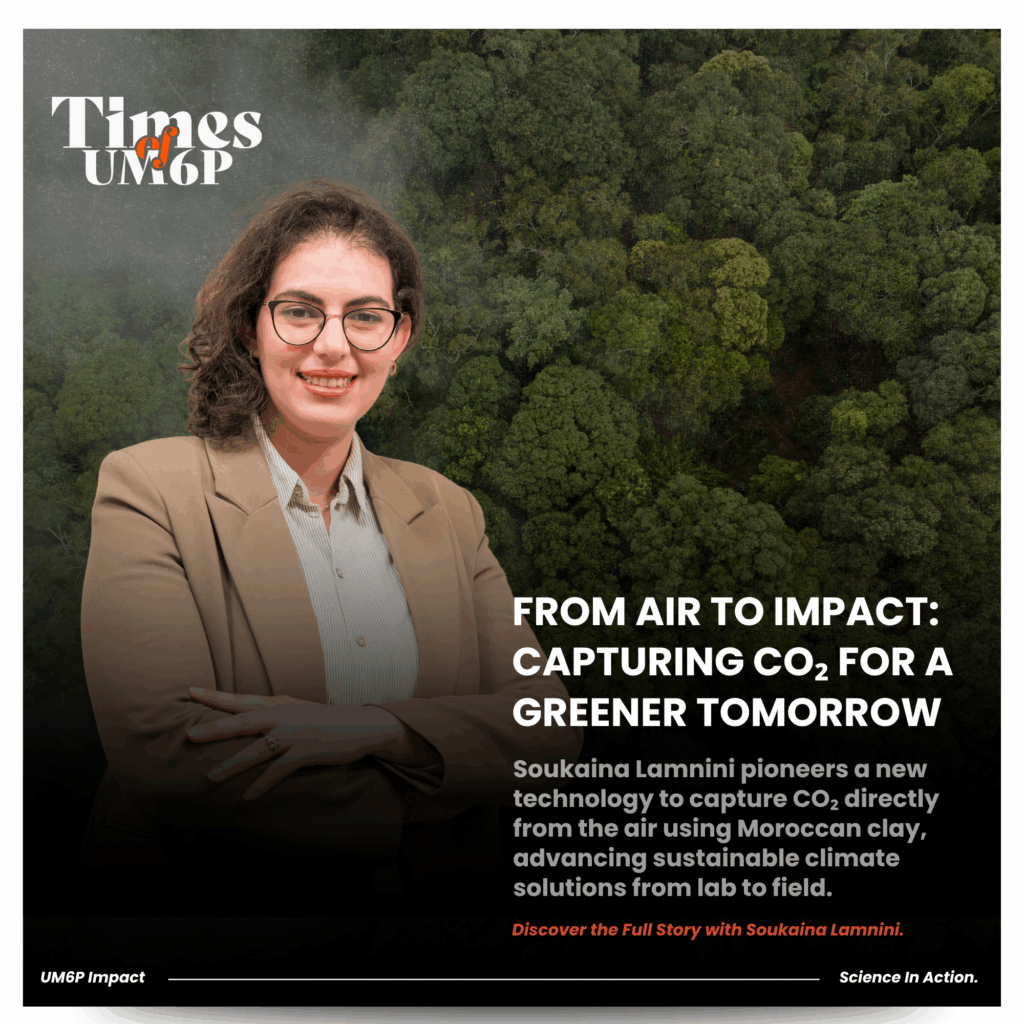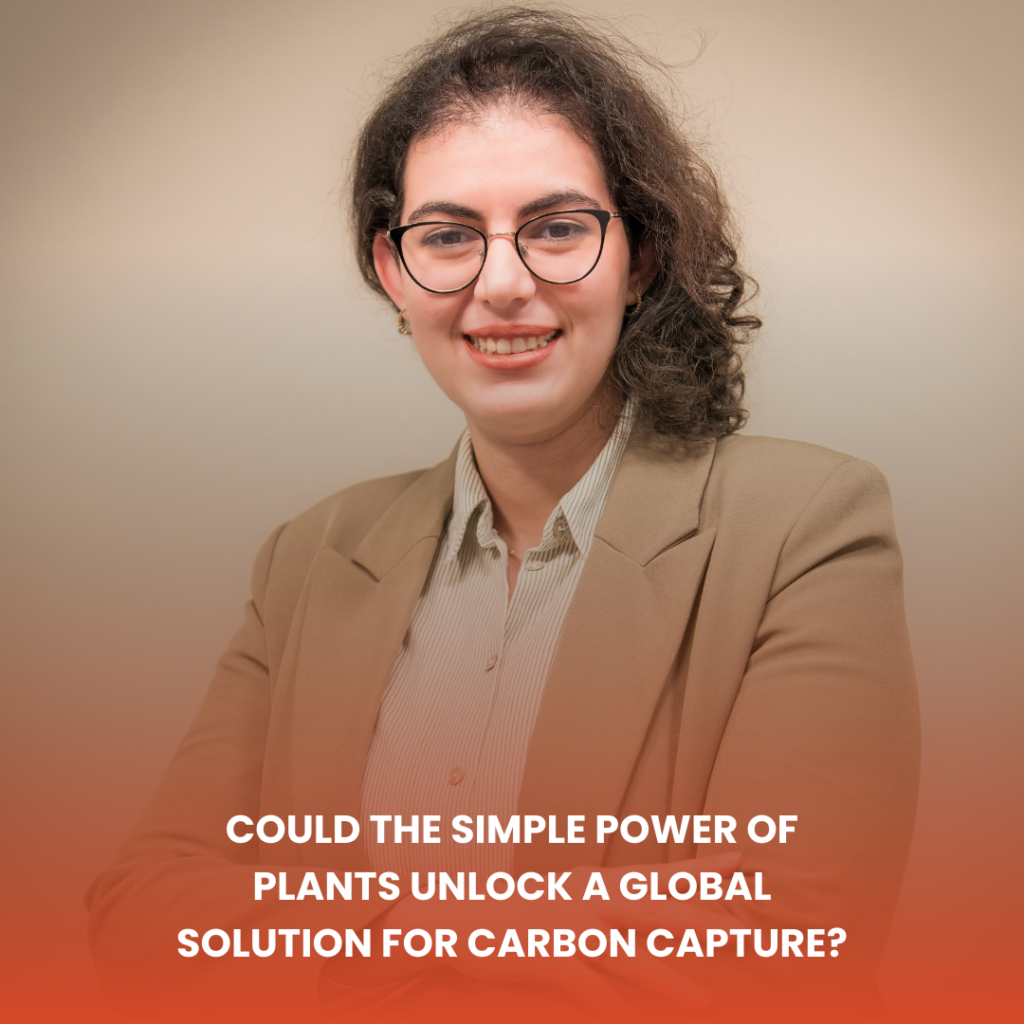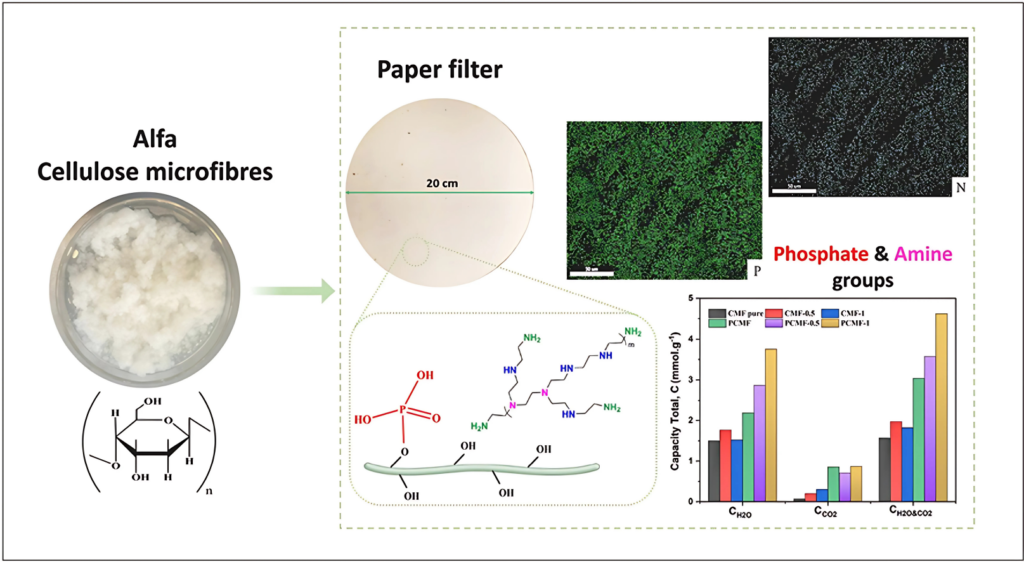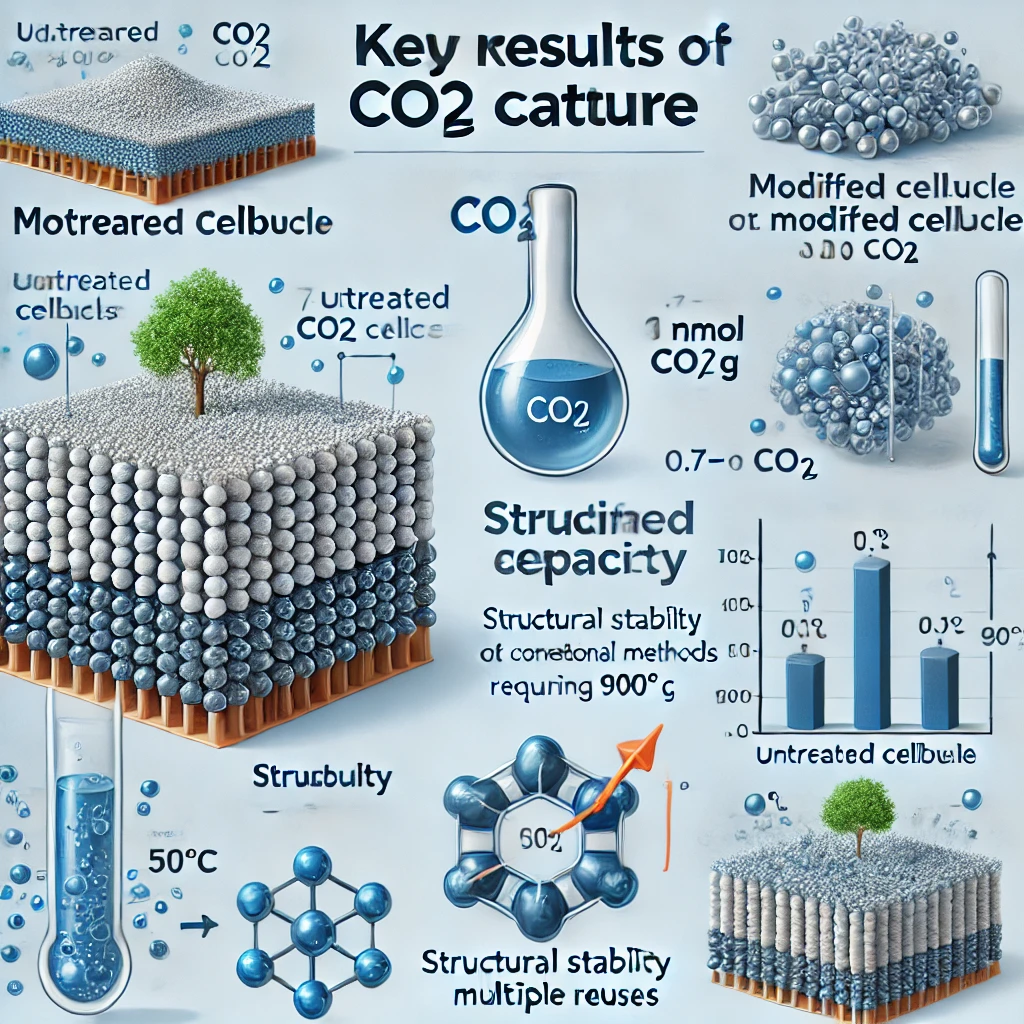Simple and Effective Process of CO₂ Capture
UM6P Impact | Science in Action #04

As the world is undergoing climate change, researchers are looking for ways to extract carbon dioxide (CO₂) from the atmosphere. One promising approach is Direct Air Capture (DAC), which captures CO₂ directly from the air. Researchers have now developed a cost-effective and simple method using cellulose from plants to produce CO₂-absorbing paper.
Meet with Dr. Soukaina Lamnini: Advancing CO₂ Capture with Sustainable Materials
Dr. Soukaina Lamnini, a scientist at the MSN Department of UM6P, specializes in developing sustainable porous materials for CO₂ capture. Her research focuses on using low-cost raw materials and industrial waste to address environmental challenges. She earned her Ph.D. in Materials Science from Óbuda University in 2020, graduating “Summa Cum Laude.”
Dr. Lamnini is a member of the Gas Capture & Utilization Group, led by Pr. Johan Jacquemin at MSN. Before joining UM6P, Dr. Lamnini worked on the NewSoc project at Politecnico di Torino, enhancing Solid Oxide Cells. With expertise in 3D printing and sustainable material development, she is committed to advancing innovative solutions for climate change. Through her teaching, she also shapes future scientists in the field of material science.
Discover Soukaina Lamnini’s Biography. Learn more about her background, research expertise, and pioneering contributions to sustainable CO₂ capture solutions. Read more here.

How Does This Work?
Cellulose, a plant-based natural material, is inexpensive, abundant, and biodegradable. Researchers have improved its CO₂ capture efficiency by chemically modifying it in two major ways.
First, they apply phosphorylation, which involves attaching phosphate groups to cellulose. This modification increases its affinity towards CO₂ molecules, making it more efficient in capturing them from the atmosphere.
Second, they dope the cellulose with polyethyleneimine (PEI functionalization), a polymer known for its high affinity to bind CO₂. By combining phosphorylation with PEI functionalization, the researchers have developed a material that can effectively capture CO₂ without becoming unstable in humid conditions. The structure of the modified cellulose forms a porous network that allows air to pass through while ensuring maximum interaction between CO₂ molecules and capture sites. This makes the material highly effective, even at low CO₂ concentrations found in the atmosphere.
Why Is This Important?
Current CO₂ capture methods are generally energy-consuming and expensive. They also lose efficiency over time. The new cellulose-based technology offers several advantages.
It is low-cost, since it uses readily available natural substances. It is efficient, functioning well even in humid conditions, unlike most conventional CO₂ capture materials. It is also energy-efficient, requiring much lower temperatures to release captured CO₂ than traditional methods.
This technology aligns with global efforts to reduce greenhouse gas emissions and develop sustainable carbon capture solutions. Unlike traditional CO₂ scrubbing systems, which need a lot of infrastructure and energy, the cellulose-based process can be adapted for various applications, from industrial carbon capture to urban air purification


Key Results
Experiments have confirmed that modified cellulose is significantly more effective at capturing CO₂ than untreated cellulose:
The new cellulose-based material can adsorb 0.7–0.9 mmol of CO₂ per gram, compared to just 0.07–0.3 mmol per gram for ordinary cellulose.
Unlike most CO₂ capture materials, this one is water-friendly. Water enhances rather than interferes with CO₂ adsorption.
The captured CO₂ can be released at 50–110°C, making the process far more energy-efficient compared to conventional methods, which require temperatures around 900°C.
The material remains structurally stable, meaning it can be reused multiple times without breaking down.
A Sustainable Alternative
The atmospheric CO₂ concentration has risen from 270 ppm before the Industrial Revolution to over 420 ppm today. This increase is a major driver of climate change, making carbon capture technologies more important than ever.
Traditional DAC technologies are often expensive and energy-intensive, but cellulose-based materials offer a promising alternative. They can be easily produced on a large scale using existing paper-making processes. They are also biodegradable, plant-derived, and more sustainable. Additionally, they require less energy to regenerate, making them a more eco-friendly CO₂ capture option.
Another major benefit is that these materials can be integrated into existing industrial processes or used in standalone CO₂-capturing units. This makes them adaptable for multiple applications, from reducing emissions in power plants to lowering CO₂ levels indoors.
Industrial Use and Future Possibilities
Several companies, including Climeworks (Switzerland), Carbon Engineering (Canada), and Global Thermostat (USA), are leading CO₂ capture efforts on an industrial scale. The introduction of cellulose-based adsorbents into these technologies could help lower costs and increase sustainability, making large-scale CO₂ removal more economically viable. Governments and environmental organizations are also supporting sustainable carbon capture solutions, making it financially attractive for industries to implement bio-based technology, such as cellulose-based CO₂ adsorbent

Next Steps
To further advance this technology, researchers are focusing on several key improvements.
- Enhancing material durability so that it can be used for longer periods without losing efficiency.
- Optimizing the PEI functionalization ratio to maximize CO₂ capture while maintaining structural stability.
- Scaling up production to make industrial implementation possible.
Future research may also explore alternative chemical modifications to improve selectivity and adsorption capacity. Additionally, combining cellulose-based adsorbents with other eco-friendly CO₂ capture techniques, such as biochar or algae-based systems, could lead to even more effective solutions.
A Greener Tomorrow
This research shows that cellulose-based CO2 capture has the potential to be a game-changer. If further developed, it could help reduce atmospheric CO2 and play an essential role in climate change mitigation.
By creating affordable, scalable, and sustainable CO2 removal technologies, scientists are paving the way for a carbon-neutral future. As this technology advances, it could be widely adopted by industries, cities, and even households to lower their carbon footprint.To learn more, read the full research paper.
A Call for Collaboration: Shaping the Future of Carbon Capture
The success of cellulose-based carbon capture depends on collaboration between scientists, environmental experts, and industry leaders. This research at UM6P demonstrates that sustainable, plant-based materials can play a crucial role in reducing atmospheric CO2.
“At UM6P, we are pioneering a new era of carbon capture by leveraging nature’s most abundant resources. By integrating cellulose research with cutting-edge chemistry, we can develop transformative solutions that will reshape the fight against climate change.”
For researchers, environmental organizations, and industry partners interested in collaborating on cellulose-based carbon capture technology, contact: ti***@**6p.ma

Leave a Reply